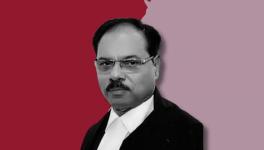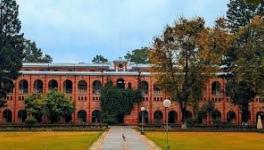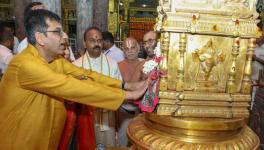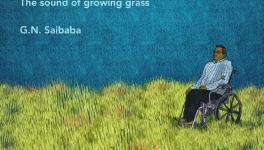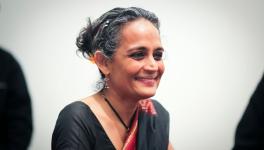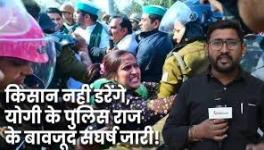A Retired Professor Goes on Mission Kashmir
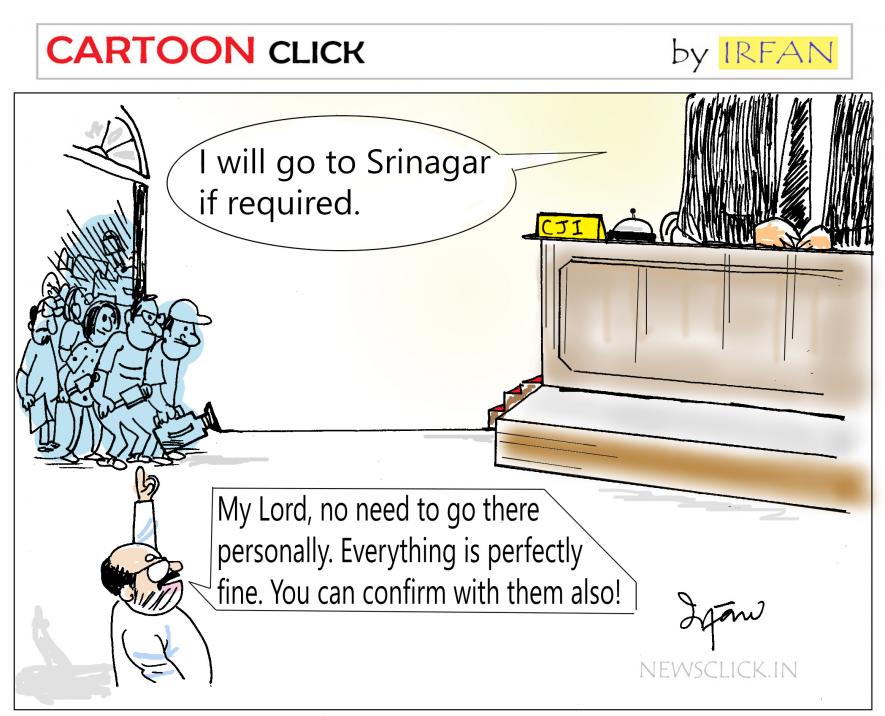
Cartoon by Irfan
Is the ‘K’ word now the latest taboo word? Yes, so it seems. Today, people are too petrified to talk of the caged Kashmir and Kashmiris. If they dare to do so, then it is subtly, and when they are in ‘safe’ company.
Unfortunately, it’s the bogus hollow-heads who are parroting the government’s Hindutva line, trickling down that typical Hindutva agenda into the very psyche of the hundreds and thousands.
Mind you, people who have not even set foot in the Kashmir Valley and, therefore, have not witnessed the dark ground realities of the place, are the ones who are talking the loudest in favour of the inhuman government tactics unleashed on the civilian masses in the Valley.
Here, in the capital city, New Delhi, if anyone tries to argue with the facts and figures then they do so at their own risk. Here, for example, are details of what VK Tripathi went through last week. This retired New Delhi-based professor of physics at IIT, Delhi, who also runs the Sadbhav Mission for communal harmony, and who is an internationally-known professor as well, travels extensively; holding talks, giving lectures, distributing fliers on his views and mission.
Early in September, Tripathi’s Sadbhav Mission decided to give a memorandum (with 83 signatories) on Kashmir’s continued communication blackout and the situation since August 5, when the government revoked the special status accorded to the former state of Jammu and Kashmir (J&K), to the President of India. The Mission also sought a 10-minute audience with the President.
The rest of the events are described below in Tripathi’s own words: “We also brought out a flier of which we made 2,000 copies in English and 6,000 in Hindi. On September 9, an extreme reaction came. I began walking and distributing fliers from IIT Delhi towards Asiad Games Village, Gargi College and Moolchand Hospital. Half a kilometer before Moolchand Flyover, a person came out of a car, snatched a bunch of 100 fliers and said, ‘Desh ke khilaf parche baant raha hai, kisne diye hain, bataa.’ (You are distributing fliers against the nation. Tell me—who has given you these?) I said, ‘I have written these, what is the problem?’ He said, “Pakistani, gaddari karta hai, boodha na hota to teri aisi pitaayee karta...” (What you are doing is treachery; if you were not old, I would have beaten you up). I said, ‘Bete (Son), you can still beat me, but tell what anti-national have I written?’ At this, he uttered a few abuses. Around that time, three policemen arrived on motorbikes. One of them had my flier. He said, ‘Someone has given me this flier, and he was also unhappy. Stop distributing the fliers.’ I said, ‘I can stop but please read it, you will feel it strengthens national unity.’
The car owner then told the police to file a FIR against me and left. One policeman was nice. He enquired what I do and told me not to distribute these fliers here as people are objecting. Then I left.’
After walking another half kilometer, Tripathi distributed a few fliers and then took a bus to return home. English copies of the fliers have been exhausted in Jawaharlal Nehru University, Jamia Millia Islamia, Delhi University (DU) and IIT, apart from a few colleges of DU. The response he got was mixed: warm in some places, passive in most and some hotheads. Of the Hindi flyers, some 700 were distributed in Mewat and Alwar in Haryana and Rajasthan, respectively, and 3,000 on Delhi’s streets.
“For every 100 passive persons in Delhi, I met two who were appreciative and three who passionately asserted that our flier was against the nation,” he says.
On September 11, Tripathi distributed 500 fliers at Income Tax Office (ITO), Delhi Gate and the Loknayak Jayprakash Narayan Hospital area. Four people expressed strong support for the government’s moves in J&K—but were not abusive—and two appreciated the flier, while the rest were passive. “Some 30% or 40% of these people were Muslims,” he says.
After talking to Tripathi, I have been in an introspective mood. What if Tripathi was not a retired academic of his stature and was instead a young student activist? Would he still have been spared by the cops or by the Hindutva supporters who are driving around town asking people to get arrested over differences of opinion?
What if his name and surname were not Vipin Kumar Tripathi and, instead, he was a Vilayat Khair Tabhish or any other Muslim name and surname? What if he was a Muslim who has an aunt or an uncle living in Pakistan? What if he was a Kashmiri shawl-seller or even an activist-academic from the Valley? What if he looked like a Muslim—wore a skull cap and beard and had worn an achkan or shervani?
Needless, perhaps, for me to detail the aftermath that is almost inevitable if this were the case. You can well grasp what insecurities and torture and questioning could have come to the fore.
Whether fliers are capable of solving the crisis unfolding in J&K or the country, is one thing. Tripathi’s comment that “one cannot turn to the police, court or Parliament” is chilling.
Yet, he feels, “We have to find a solution (far beyond fliers). I have noted heightened assertion of sectarianism by the rich and musclemen and grave apprehension of destabilisation of [their] citizenship among the minorities.”
An Offshoot of Sorts
Over the last week or so, Tripathi went on his mission of distributing fliers, he also visited Prayas Balgrah (a jail-cum-reform centre for juvenile criminals). There he held a 40-minute meeting with 30 boys and realised that one-third of them were Muslims.
This should be a wake-up call for the Muslim community. Not only in terms of trying to reach out to these boys but also for the boys to ask themselves why many Muslim children seem to be taking to petty crime? Has the community failed them? Has the community deprived these children of their childhood? Doesn’t the community need to question itself?
This fact should also be taken into consideration by the Aam Aadmi Party (AAP) government in New Delhi. I am aware of the great work done by AAP in trying to bring quality education to the disadvantaged. They should go a step further—rather, many steps further—in trying to reach out, through educational and vocational training centres, to the disadvantaged minority community children.
Also, AAP’s top brass, Manish Sisodia, and his team, should try and take mainstream education towards the madrasas, so that together with Islamic studies, the children are well-versed with mainstream education as well. This will be a big step in reaching out to these madrasa children. AAP should do this work—and soon.
Humra Quraishi is a freelance journalist and commentator based in Gurgaon. Views are personal.
Get the latest reports & analysis with people's perspective on Protests, movements & deep analytical videos, discussions of the current affairs in your Telegram app. Subscribe to NewsClick's Telegram channel & get Real-Time updates on stories, as they get published on our website.










